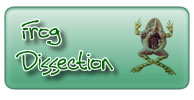
Unit II Vocabulary | Vocab Set #1 | Vocab Set #2 | Vocab Set #3 | Vocab Set #4
Download the words to your ipod by clicking here!
Unit II, Vocab #3 | Table Template
Atomic Mass: average mass of an atom of an element; its unit of measure is the atomic mass unit (u), which is 1/12 the mass of a carbon-12 atom.
Atomic Number: number of protons in the nucleus f each atom of a given element; is the top number in the periodic table.
Compound: a substance produced when elements combine and whose properties are different.
Electron: negatively-charged particle that exists in an electron cloud formation around an atom’s nucleus.
Electron Cloud: region surrounding the nucleus of an atom, where electrons are most likely to be found.
Element: substance that cannot be broken down into simpler substances.
Isotopes: two or more atoms of the same element that have different numbers of neutrons in their nuclei.
Mass Number: sum of the number of protons and neutrons in the nucleus of an atom.
Metal: element that is malleable, ductile, a good conductor of electricity, and generally has a shiny or metallic luster.
Metalloid: element that shares some properties with both metals and nonmetals.
Mixture: a combination of compounds and elements that has not formed a new substance and whose proportions can be changed without changing the mixture’s identity.
Neutron: electrically-neutral particle that has the same mass as a proton and is found in a atom’s nucleus.
Proton: positively-charged particle in the nucleus of an atom.
Nonmetal: element that is usually a gas or brittle solid at room temperature and is a poor conductor of heat and electricity.

